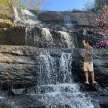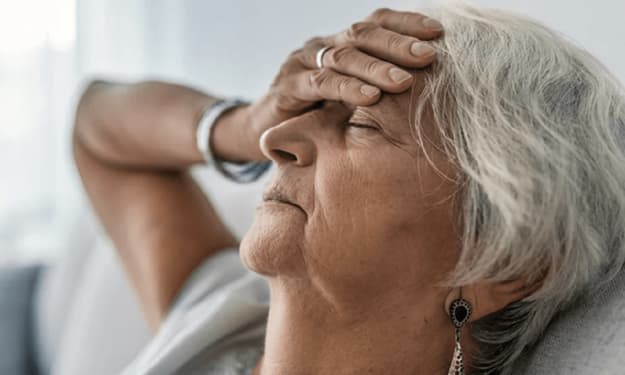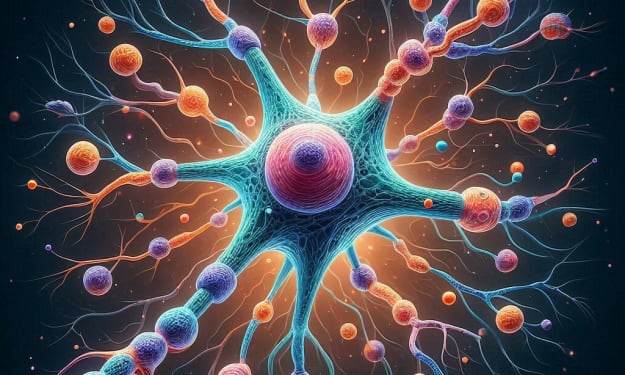13 common mistakes to avoid during recovery after stroke
The goal of stroke rehabilitation is to help people relearn skills lost when part of the brain was affected.

Rehabilitation programs can help improve mobility, speech, strength, and daily living skills, and can help you regain independence and improve your quality of life.
Below are 13 common mistakes you need to avoid during stroke recovery to help the recovery process be effective and prevent recurrence.
1. Ignore setting recovery goals
Furthermore, research has found that patients who engage in active goal setting with their therapist are more satisfied with their rehabilitation.
Start by setting goals that are meaningful to you. Goals can range from short-term goals to long-term accomplishments. For example, set a goal to try to stand if you can't walk or say simple words if you have aphasia.
Talk to your therapist about setting goals and setting realistic time frames for achieving them. You can also reach out to family, friends, and a stroke recovery group for encouragement to help you stay on track.
2. Loss of hope
Many stroke patients and caregivers feel depressed, angry, or anxious after a stroke. In particular, patients often have emotional distress or impulsive behavior or depression. This partly occurs due to the influence of the brain and the negativity caused by complications encountered.
However, rehabilitation after a stroke can restore complications and help patients gradually regain basic functions. It is important that patients need to have hope and faith. Share with everyone to eliminate negative thoughts.
3. Not staying motivated
Staying motivated during stroke recovery can be challenging. Apathy occurs in up to 40% of stroke patients and is associated with worse rehabilitation outcomes.
For example, if one of your regular habits is to write a list of tasks for the day, try writing content that includes a quote or motivational phrase that's important to you.
4. Not practicing consistently
There are several stroke exercises that can help you improve function faster after a stroke:
- Core exercises can help if you have lost core strength on one side.
- Balance exercises help improve stability.
- Leg exercises can encourage mobility.
- Arm exercises can restore function to your arms, making it easier for you to hold and release objects.
- Hand dexterity exercises improve hand strength and motor function.
- Shoulder exercises can help you restore arm and shoulder function after a stroke.
5. Loss of momentum during the recovery stabilization period
Stabilization is part of a person's recovery from a stroke. During this stage, people may feel as though they have reached their limit and can no longer expect any improvement. They may lose motivation.
But it's worth mentioning that research shows that stroke progress can still be made beyond the initial recovery phase. That is, when the recovery stage is stable, the patient can still significantly improve complications. So, it is essential to continue to stay motivated and practice.
6. "Neglect" weak body parts
After a stroke, people often have weakness in their arms or legs, and they often rely on their stronger arm or leg. This can lead to losing the use of the remaining limb.
One way to do this is to use Constraint Movement Therapy (CIMT), a therapy that prevents the stronger limbs from moving, forcing the use of the weaker arm or leg instead. Before starting a CIMT program, discuss it with your doctor or therapist to make sure it is right for you.
7. Not getting enough sleep
Getting enough sleep during stroke recovery is very important. It can help organize and structure damaged brain circuits after a stroke, helping to improve memory and learning ability.
8. Keep stress and inflammation high
Chronic stress after a stroke can hinder recovery because the body is flooded with a hormone called cortisol. Cortisol can throw the body’s pH out of balance, leading to high acidity and an increase in harmful bacteria. This weakens the immune system, making it harder to recover from illness.
To boost your immune system, try consuming natural probiotics (found in foods like yogurt), which help promote good bacteria in your body.
Inflammation is also a problem in stroke recovery. It is thought that inflammation can increase brain damage and contribute to the spread of ischemic damage after a stroke. Chronic stress leads to inflammation in the body.
People can reduce stress during recovery by practicing exercises such as deep breathing, meditation, or yoga.
9. Not focusing on nutrition
After a stroke, it can be difficult to get all the nutrients you need, partly because your ability to eat is no longer the same.
However, a healthy diet can reduce your risk of having another stroke by helping to reduce certain risk factors such as blood pressure, cholesterol levels and weight.
So what should people after a stroke eat?
People after a stroke should eat a variety of foods rich in vitamins, minerals, and proteins such as vegetables, fruits, grains, lean meat and poultry, fish, eggs, tofu, nuts, beans, and milk. , yogurt.
Patients should also limit eating foods containing saturated fat, added salt and added sugar.
10. Overtraining
Exercise is important for stroke recovery. The right amount and intensity of exercise can help you recover faster and reduce your risk of having another stroke.
However, due to the misconception that more is better, many people overtrain. Research shows that excessive and high-intensity activity can increase the risk of heart attack and stroke. Adequate rest between workouts or rehabilitation sessions is essential.
11. Not thinking about prevention
Stroke survivors are at high risk of having a second stroke or other serious medical problems for at least 5 years after the first stroke. Therefore, stroke prevention is very important.
To prevent recurrent strokes, patients should:
- Drug use management
- Focus on nutrition
- Limit alcoholic beverages
- Exercise regularly
- Quitting smoking
- Lower blood pressure
12. Failing to resolve communication issues
After a stroke, many people develop aphasia, which makes it difficult to understand spoken and written language. Expressive aphasia makes it difficult to think or express words accurately.
This can also make the person after a stroke feel self-conscious, depressed or other negative emotions. If you have expressive aphasia, you should take a deep breath and try to relax before communicating with someone. Relatives should also help the patient say the simplest words, and over time persistently use more complex words.
13. Ignoring post-stroke stress disorder
According to research conducted by researchers at Columbia University Medical Center, about one in four stroke victims develops post-traumatic stress disorder (PTSD).
People with PTSD have distressing, worrying thoughts and feelings related to their experience that persist after the traumatic event has ended. The person may feel chronically fearful, sad, or angry.
They may also feel isolated from others. It is important for anyone with PTSD to be assessed by a doctor or mental health professional so they can get support to overcome the disorder.
Conclude
Recovery from a stroke can be a long process, and no two people recover from a stroke in exactly the same way. Regaining full physical and cognitive function after a stroke requires effort and patience as well as companionship and sharing from family members. It's not certain that everyone can recover well, but it's important to have faith.
About the Creator
HK Decor
Telling stories my heart needs to tell <3 life is a journey, not a competition
If you like what you read, feel free to leave a tip,I would love some feedback
https://sites.google.com/view/hk-decor/trang-ch%E1%BB%A7
Enjoyed the story? Support the Creator.
Subscribe for free to receive all their stories in your feed. You could also pledge your support or give them a one-off tip, letting them know you appreciate their work.






Comments
There are no comments for this story
Be the first to respond and start the conversation.